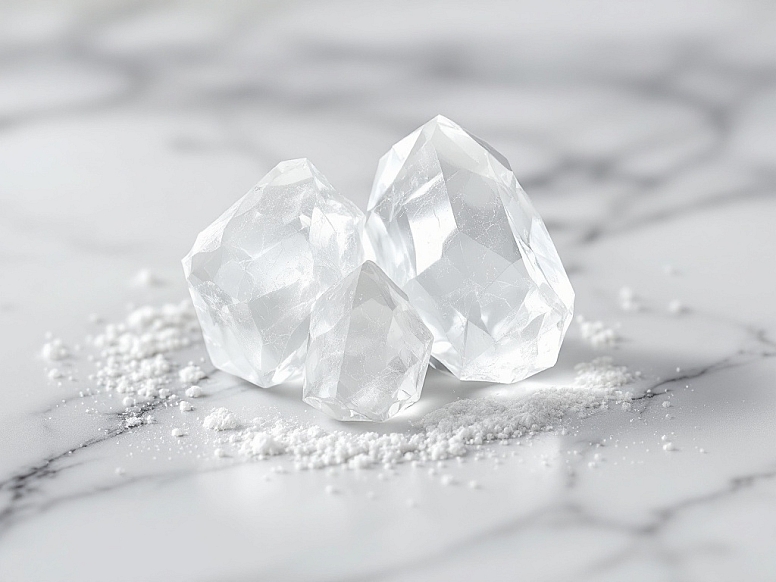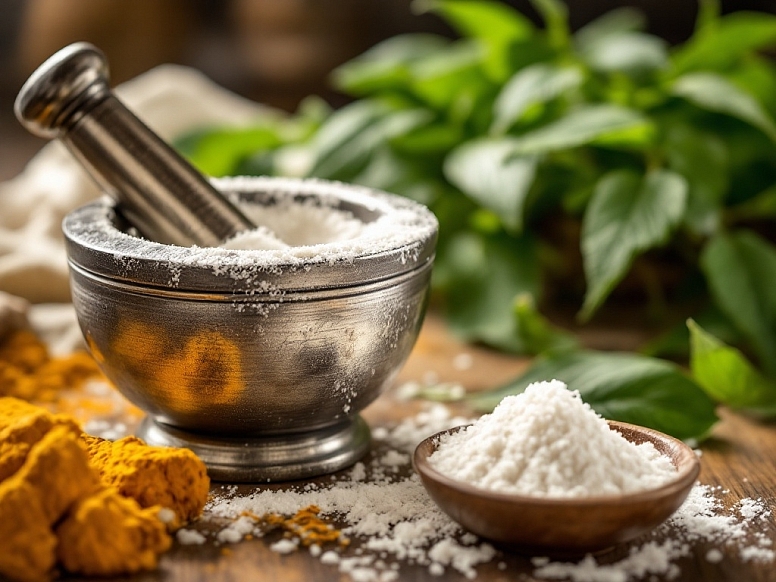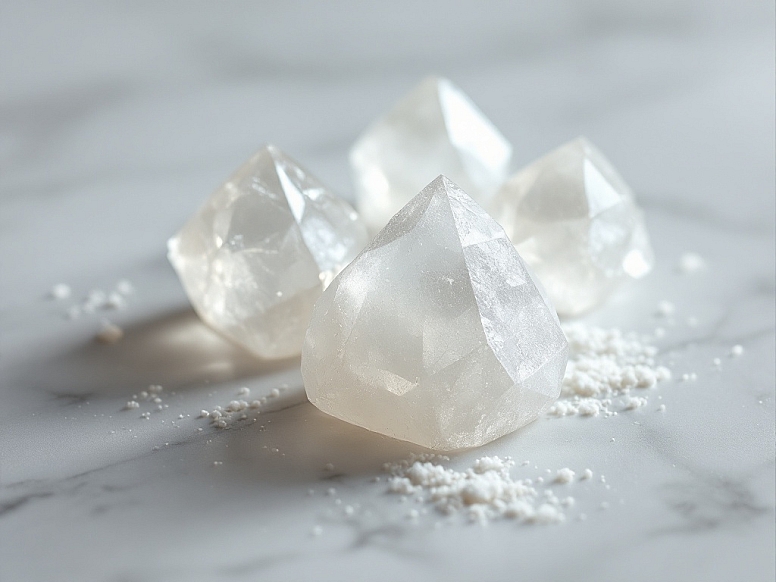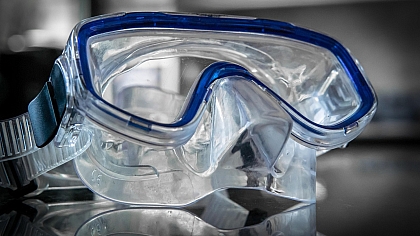
The Science-Backed Health Benefits of Potassium Alum (Phitkari)
Potassium alum, commonly known as phitkari, is a naturally occurring mineral compound (KAl(SO₄)₂·12H₂O) with antiseptic, astringent, and antibacterial properties. Used for centuries in Ayurveda and traditional medicine, it offers multiple health benefits supported by both historical use and modern research.
Key Properties of Potassium Alum
- Antiseptic – Inhibits bacterial and fungal growth.
- Astringent – Contracts tissues to reduce bleeding and secretions.
- Water purification – Clarifies water by removing suspended particles.
- Readily available – Found in pharmacies, grocery stores, and online.
Below are the most effective ways to use potassium alum for health and hygiene.
1. Wound Care and Minor Bleeding
Potassium alum’s astringent action helps constrict blood vessels, making it useful for minor cuts and abrasions.
How to use it safely:
- Grind a small amount into a fine powder.
- Apply sparingly to the wound (expect mild stinging).
- Cover with a clean bandage.
Note: Do not use on deep wounds or severe burns.
2. Oral Health: Mouth Ulcers and Gingivitis
The antibacterial effects of potassium alum can help manage mouth ulcers and mild gum inflammation.
Recommended method:
- Dissolve a pinch in ½ cup warm water.
- Use as a mouth rinse for 30 seconds (avoid swallowing).
- Rinse mouth with plain water afterward.
Caution: Prolonged use may irritate; limit to short-term treatment.
3. Skin Care: Acne and Oily Skin Control
Potassium alum acts as a natural astringent, reducing excess oil and tightening pores.
Simple skin treatment:
- Dissolve a pea-sized amount in water.
- Apply lightly to affected areas with a cotton pad.
- Rinse after 1-2 minutes to prevent dryness.
Best for: Occasional acne flare-ups, not chronic skin conditions.
4. Water Purification - How It Works
Potassium alum causes suspended particles in water to clump together, making them easier to filter out. While potassium alum is excellent for clarifying cloudy water, there's an important distinction about what it can and can't do:
What it DOES:
-
Causes fine particles (dirt, sediment) to clump together (flocculation)
-
Makes suspended solids sink to the bottom
-
Results in visibly clearer water
What it DOESN'T do:
-
Doesn't kill bacteria or viruses
-
Doesn't remove chemical contaminants
-
Doesn't make water completely safe to drink alone
Proper Water Purification Steps:
-
Add pea-sized alum to 1 litre of cloudy water
-
Stir for 1 minute, then let sit 30 minutes
-
Carefully pour clear top water through a clean cloth filter
-
BOIL the filtered water for 1-2 minutes to kill microbes
-
Cool before drinking
5. Foot Hygiene - Why It Works Differently
Its antimicrobial properties make potassium alum useful for foot care. When applied directly to skin, potassium alum shows antimicrobial effects because:
How it fights microbes on skin:
-
Creates an acidic environment that bacteria dislike
-
Disrupts bacterial cell membranes
-
Reduces the moisture that fungi need to grow
-
Is in direct, prolonged contact with microbes
Key difference from the above-mentioned water treatment:
-
On skin: Direct chemical action against microbes
-
In water: Only physical clarification, no germ-killing
Safe Foot Care Use:
-
Apply a dry alum block to clean, dry feet
-
It can also dissolve in water for a foot soak (10 minutes max)
-
Can be used after washing, before socks
-
Helps prevent odor and mild fungal issues
-
Don't use on broken skin
🔍 Why the Different Effects?
Alum's antimicrobial properties require direct, prolonged contact on skin but not in water treatment. In water, it's primarily a clarifier, not a disinfectant. Always boil alum-treated water to kill pathogens.
Safety and Precautions
- Do not ingest large amounts – Can cause nausea or digestive issues.
- Patch-test first – Some may experience skin irritation.
- It is not a substitute for medical treatment. It is used for minor issues only.

Where to Find Potassium Alum
- Pharmacies (often sold as "alum powder" or "alum block").
- Online retailers (check for food-grade or cosmetic-grade purity).
- South Asian grocery stores (labeled as "phitkari").
Give It a Try—Safely
Potassium alum is a versatile, low-cost remedy with proven benefits. Whether you're treating a small cut, improving skin health, or purifying water, it’s a useful addition to your natural care toolkit. Always follow proper usage guidelines and consult a doctor for persistent health concerns.
Frequently Asked Questions
Q: Can I use potassium alum daily on my skin?
A: No, frequent use may cause excessive dryness. Limit to 2-3 times per week.
Q: Is alum safe for children?
A: Only under supervision—avoid mouth rinses and use minimal amounts on cuts.
Q: Does alum whiten teeth?
A: No strong evidence supports this claim. Overuse may damage enamel.
Q: What’s the difference between alum and baking soda?
A: Alum is an astringent and antiseptic; baking soda is alkaline and used for cleaning or mild antacid purposes.
Q: Can potassium alum treat canker sores?
A: Yes, as a mild antiseptic rinse, but discontinue if irritation occurs.
Q: Is alum safe for pets?
A: No—it can be toxic if ingested by animals. Keep it out of reach.
Q: Does alum expire?
A: No, but powder may absorb moisture over time. A dry block lasts indefinitely.
Q: Can I use alum to remove sweat stains from clothes?
A: Yes! Dissolve in water and soak stained areas before washing.
Q: Why does alum sting on cuts?
A: Its astringent action temporarily tightens skin, which can cause a brief burning sensation.
Beyond the Basics: Lesser-Known Uses of Potassium Alum
While most people know potassium alum for wound care or skin benefits, it has a few unexpected applications worth exploring:
- Natural Deodorant – Its antibacterial properties make it effective at neutralizing odor-causing bacteria. Simply wet an alum block and glide it over clean underarms. Unlike commercial deodorants, it doesn’t block sweat but prevents bacterial growth that causes smell. Use it daily after a shower.
- Post-Shave Treatment – A quick swipe of an alum block over shaved skin helps close tiny nicks, reduce irritation, and prevent razor burn. Many traditional barbers still use this method.
- Preserving Food (Historically) – Before modern refrigeration, alum was sometimes used in pickling to maintain crispness. However, due to potential aluminum exposure, this is no longer recommended for food preservation.

Potassium Alum vs. Other Types of Alum
Not all alums are the same. The most common varieties include:
| Type of Alum | Chemical Formula | Primary Use | Safety Notes |
|---|---|---|---|
| Potassium Alum (Phitkari) | KAl(SO₄)₂·12H₂O | Health, skincare, water purification | Generally safe for external use |
| Ammonium Alum | NH₄Al(SO₄)₂·12H₂O | Industrial, flame retardants | Not recommended for skin or ingestion |
| Soda Alum | NaAl(SO₄)₂·12H₂O | Baking powder (historically) | Rarely used today |
Always verify you’re using potassium alum for health-related purposes.
A Word on Aluminum Safety
Some people worry about the aluminum content in alum. Here’s what research says:
- Potassium alum contains aluminum sulfate, but studies show minimal skin absorption.
- The WHO considers small amounts safe for water purification.
- Avoid ingestion—large doses may cause stomach upset or toxicity.
If you’re concerned, limit use to external applications and opt for alternatives like baking soda for oral rinses.
How to Store Alum Properly
To extend its shelf life:
- Keep it in an airtight container away from moisture.
- An alum block lasts longer than powder (less risk of clumping).
- Store in a cool, dry place (not the bathroom).
Ready to Try Potassium Alum?
With its centuries-old track record and science-backed benefits, potassium alum is a handy, natural remedy to keep at home. Whether you’re treating a minor cut, freshening up, or clarifying water, it’s a versatile and affordable option. Just remember: a little goes a long way.
Have you used phitkari before? Share your experience in the comments!









